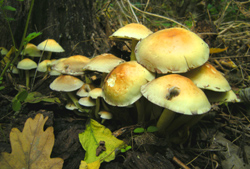Advances in mushroom pest control
In order to control the two major pests, the PRIME project developed strategies using mite and/or nematode biological agents. The phenology and predatory behaviour of the mite species during various production stages of the mushroom cultivation process was established. This was necessary in order to allow for recommendations for application rates and timing of introduction for the best pest control. Beyond this, trustworthy, sustainable and cost efficient means for mass rearing the mites was created so that their use in the industry could be of economical value. New nematode isolates were sought in order to help control phorids in a more tolerable concentration. In this way, the new isolates could be utilised for selective breeding of the nematodes to better their control capacity for phorids. Ultimately, determining the possibility of combining both mites and nematodes to come up with the best biological control strategy for both mushroom fly pests was sought. What followed was the gathering of information regarding timing, rates and method of application, as well as monitoring. Included in this effort was general knowledge of product use on other facets of mushroom growing. Also taken into consideration was information regarding the effects that other husbandry activities may have on the effectiveness of the product both during and after application. In this way, any necessary relevant and remedial actions could be taken. Outcomes were to be promoted in product and company literature as well as sales and technical meetings held with growers and technical advisors. These efforts could further enhance the mushroom industry in the control of sciarid and phorid pests.



